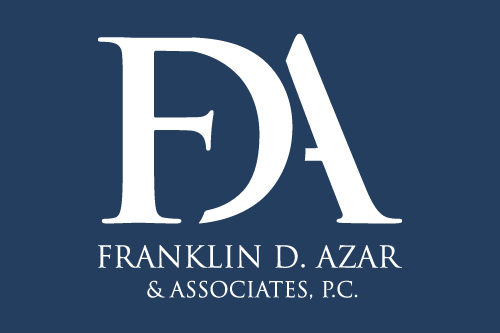The process of shopping for a new car is full of challenges — and, more often than not, a few unpleasant surprises. You may think you’ve settled on a make, model, color, and price, only to find out about a range of costs, fees, and financial issues that have to be addressed before you can seal the deal.
One of the add-on products that your car dealer might urge you to purchase is known as “GAP insurance” or “GAP coverage.” You may even be told that a GAP agreement is required before you can obtain your auto loan. But you should ask a few questions before signing any such agreement. GAP insurance can protect you, in certain situations, from a significant financial loss — but it can also be inadequate, unnecessary, and hundreds of dollars more expensive than readily available alternatives.
Here’s what you need to know before you decide whether GAP insurance is right for you.
WHAT IS GAP INSURANCE?
GAP stands for Guaranteed Asset Protection. It’s an optional form of insurance coverage that is supposed to protect new car buyers from loss in the event that the vehicle is stolen or damaged beyond repair. It does this by covering the “gap” between the actual cash value of the car and what is still owed on the auto loan.
For example, let’s say you took out a $15,000 auto loan on a new car — and a few months later, the car is totaled in an accident. Because of the depreciation that occurs as soon as you drive a new car off the lot (as much as twenty or thirty percent in the first year) the insurance company that handles your collision coverage may be willing to pay only $10,000 for the actual cash value of the vehicle. That leaves you owing the finance company close to $5000 for a car you no longer have — unless you have GAP insurance, which is supposed to pay off the balance of the loan.
WHAT ARE THE DRAWBACKS?
Although GAP insurance can make sense for some car buyers, no one should enter an agreement for such coverage without asking a few basic questions — and doing some comparative shopping. The products offered at dealerships sometimes involve pre-payment of the entire amount, and that amount can be many times more expensive than if you obtained GAP coverage directly through a major insurance company.
According to Investopedia, dealerships typically charge a flat rate of $500 to $700 for GAP coverage. (The actual cost can be even greater, since many customers fold the fee into the total amount of the loan—and end up paying interest on their GAP coverage.) By contrast, adding GAP coverage to your existing auto policy might run as little as $30 to $60 a year. That’s a huge price difference, and it highlights a sad truth about the “peace of mind” sales pitch you might hear from your dealer. Keep in mind that if the dealership is pushing the product, they’re probably getting something out of the deal, as is the lender that takes over the loan.
Price isn’t the only issue. GAP coverage may seem like a good idea at the start of your loan period, when the disparity between the car’s cash value and the loan amount is greatest. But it’s of little use if the cash value “catches up” with the remaining loan amount, as could happen in the latter stages of the loan. And what happens if you pay the loan off early?
Under Colorado law, the lender is supposed to refund the remaining balance of the GAP fee; for instance, if you paid off a three-year auto loan in 18 months and paid a flat rate of $600 for GAP insurance, you should get $300 back. But complaints have arisen in several states against financial companies for failing to notify consumers of the refunds due to them or failing to reimburse them in a timely manner, leading to class-action litigation over GAP fees.
Some GAP customers have also alleged that the actual coverage turns out to be less comprehensive than it was represented to be — in other words, fees and exclusions tucked away in the fine print of the GAP agreements impose limits on how much the insurance will pay and leaves some car buyers upside-down on their auto loan following a theft or serious accident.
WHAT ARE THE ALTERNATIVES?
Contact your auto insurance company to discuss your options before committing to a GAP agreement offered by your dealership or an auto loan company. Major insurance carriers offer a number of products that provide similar protection and may be preferable, depending on the amount and time span of the loan, how much you drive, how soon you expect to pay off the loan, and other factors. You may want to ask about a loan/lease payoff arrangement, new car replacement coverage (which helps to pay for a new car of the same make and model as your totaled vehicle), or better car replacement, and consider how the costs of these options compare to GAP insurance.
Once you decide what kind of coverage best fits your circumstances, it’s a good idea to monitor the situation and calculate your depreciation over time. If the difference between the outstanding loan amount and your car’s cash value has shrunk from a chasm to a slight hop, it may be time to cancel the coverage.
THE CLASS ACTION LAWYERS AT FDAZAR
For more than 30 years, the attorneys at Frank Azar Car & Truck Accident Lawyers have fought for the rights of individuals who have suffered damages at the hands of large corporations. We have recovered over $1.5 billion for our clients, including $750 million from Walmart in a wage-and-hour dispute that involved litigation in 26 states. Our class-action department is staffed with experienced and knowledgeable attorneys who focus on litigating large, complex cases, including cases involving data breaches, bank and credit union overdraft fees, GAP insurance refunds, 401K fees, and more.
To determine if you have a claim, speak to a member of our class-action team today or contact us here. The consultation is free.




